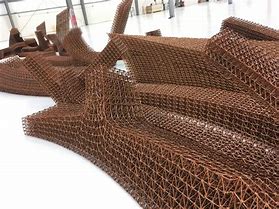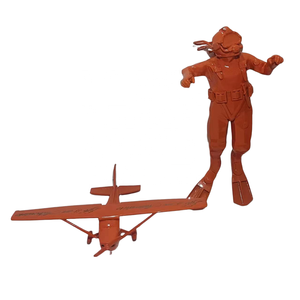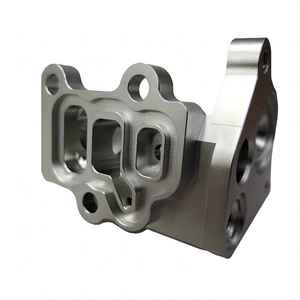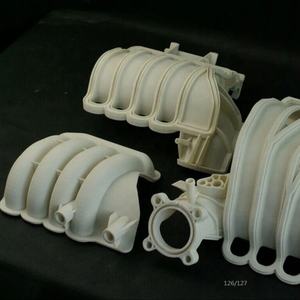Discover a professional 3D printing powder supplier
Title: Metal Magic: The Real Deal Behind 3D Metal Printing
(how does 3d metal printing works)
1. What Exactly is 3D Metal Printing?
Forget plastic trinkets. 3D metal printing builds real, strong, usable metal parts. It’s also called metal additive manufacturing. Think of it like building a layer cake. But instead of flour and sugar, it uses fine metal powder. Instead of frosting, it uses intense heat like a laser or electron beam. The machine reads a digital blueprint. It adds thin layers of metal powder, one on top of the other. The heat source melts the powder exactly where the design says to melt it. This happens layer by layer. Slowly, a solid metal object takes shape right inside the machine. It’s not casting. It’s not machining metal away. It’s building complex shapes directly from powder. This process unlocks new possibilities for making things. It solves problems old methods can’t handle.
2. Why Bother Printing Metal?
Why choose 3D metal printing over traditional methods? It offers unique advantages. One big reason is design freedom. Imagine parts with complex internal channels. Think about shapes with intricate lattices inside. These are impossible to make with standard machining or casting. Printing builds them easily. This freedom lets engineers optimize parts like never before. They can make parts lighter. They can make parts stronger exactly where strength is needed. They can combine many smaller parts into one single printed piece. This reduces assembly time. It cuts down potential failure points. Another huge plus is less waste. Traditional machining starts with a big block of metal. It carves away most of it to get the final shape. That’s a lot of expensive material scrap. Printing adds material only where it’s needed. Waste is minimal. This saves money. It’s also better for the environment. Printing is also great for prototypes. Need a custom metal part fast? Printing can make it in hours or days. Traditional methods might take weeks. For low-volume production or unique one-off parts, printing is often the most practical solution.
3. How Does the Metal Printing Magic Happen?
Several methods exist for 3D metal printing. The most common is Powder Bed Fusion (PBF). Here’s how PBF generally works. A thin layer of fine metal powder spreads across a build platform. A powerful laser or electron beam scans across the powder. It follows the cross-section of the part for that specific layer. The beam melts the metal particles together. It fuses them into solid metal. The build platform then lowers slightly. A new layer of powder spreads on top. The laser melts this new layer. It also bonds it to the layer below. This repeats hundreds or thousands of times. The part grows layer by layer inside a chamber filled with inert gas. This gas prevents the hot metal from oxidizing. After printing, the part is buried in unused powder. Workers carefully dig it out. The part is rough. It needs cleaning and finishing. Support structures are often needed. These hold the part in place during printing. They prevent warping from heat. Workers remove these supports after printing. Other methods exist too. Binder Jetting sprays a liquid binder onto powder layers to glue particles together. Later, heat fuses the metal. Directed Energy Deposition (DED) blows metal powder through a nozzle. A laser melts it as it lands, building up material. Each method has strengths for different jobs. PBF offers high precision and complex shapes. DED is great for adding material to existing parts or making large items.
4. Where is 3D Metal Printing Making Waves?
3D metal printing is transforming industries. Aerospace was an early adopter. Weight savings are critical for planes and rockets. Printing creates ultra-lightweight, strong components. Think fuel nozzles with complex internal cooling channels. Think titanium brackets impossible to machine. The medical field embraces it too. Surgeons use custom-printed titanium implants. These fit a patient’s unique bone structure perfectly. Dental labs print crowns and bridges faster than ever. Orthopedic implants benefit from porous structures. Bone can grow into these structures. Automotive companies use printing for prototyping. They make high-performance racing parts. They create custom tools for the factory floor. Even consumer goods are appearing. Think high-end, custom bicycles with printed titanium lugs. Jewelers create intricate pieces impossible to cast. The energy sector prints complex parts for turbines and drilling equipment. The military uses it for specialized vehicle components and on-demand repairs. Tool and die makers print molds with conformal cooling channels. These channels follow the mold’s shape. They cool parts faster and more evenly. This improves manufacturing speed and quality. The applications keep growing as the technology matures.
5. Your 3D Metal Printing Questions Answered (FAQs)
People often ask these questions about 3D metal printing.
What metals can you print? Many metals work. Common ones include titanium alloys (strong, lightweight), stainless steels (versatile, corrosion-resistant), aluminum alloys (light), nickel superalloys (heat resistant), cobalt-chrome (biocompatible, wear-resistant), and tool steels. Research continues. New alloys are constantly being developed.
Is printed metal as strong as regular metal? Yes, often stronger. The printing process can create unique microstructures. Post-processing like heat treatment is usually needed. This ensures the metal meets its full strength potential. Properly printed and treated parts meet or exceed standards for cast or forged equivalents. They are fully dense and functional.
How expensive is it? Costs are falling but remain high compared to mass production methods. The machines cost a lot. Metal powder is expensive. Skilled operators are needed. Post-processing adds cost. For complex parts, prototypes, or low volumes, printing can be cost-effective. Savings come from less waste, faster time-to-market, and design optimizations. Mass production of simple parts is still cheaper with casting or machining.
Can I print metal at home? Not practically. Desktop plastic printers are common. Metal printers are industrial machines. They require high power, inert gas environments, lasers, and significant safety measures. Handling fine metal powder needs care. Post-processing requires industrial equipment. It’s a factory-floor technology, not a hobbyist tool yet.
(how does 3d metal printing works)
What are the size limits? Print size depends on the machine. Desktop-sized printers exist for small parts. Industrial machines can print parts several meters long. The largest machines handle components for aerospace and automotive sectors. Size is less limiting than it used to be.








